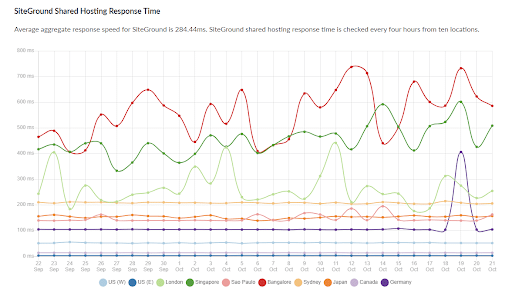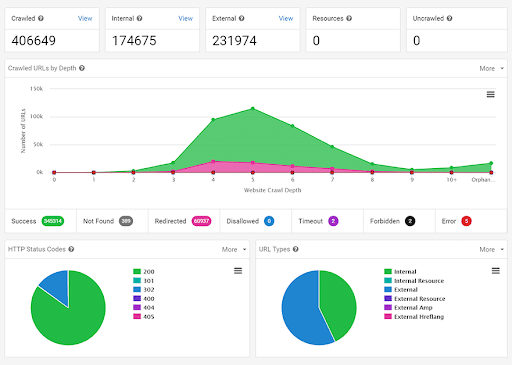There are many reasons you might choose to migrate your website to a new hosting provider at some point. Perhaps another provider offers improved speed, better rates, or more reliable customer service.
That said, you might be wondering how switching to a new provider will affect your site’s rankings in Google searches.
This is an understandable concern. Luckily, there are steps you can take to prevent rankings from dropping because you switched to a new provider. They include the following:
Study Speed and Security Carefully
Sometimes website owners do notice that certain pages are no longer as popular as they once were after choosing a new hosting provider for their website. This is often a result of technical issues. Perhaps they chose a provider who doesn’t offer ideal load speeds. Unfortunately, if a page isn’t loading quickly, users will be less likely to engage with it. This signals to Google’s algorithm that the page’s content isn’t strong and engaging. Its rankings will thus fall.
Guard against this by carefully researching the speed of your hosting provider options before choosing one. Your goal is to identify a provider with a reputation for consistently fast load speeds. You can also check charts like the one below to further understand how speed can vary from one provider to another:

This web host’s performance chart is based on speed test results at HostScore.
It’s also important to research key security factors during this stage. Security breaches can result in technical problems that will negatively affect page performance, which will in turn affect page rankings. For instance, hackers may launch a DDoS attack, which involves sending a web host so many requests it can’t handle the load, resulting in slow speed. Of course, a hacker could also simply clutter up your code if they gained the necessary access. This will also have a negative impact on page load speed.
Conduct a Crawl of the Website
A website “crawl” tool can help you identify any technical issues that may potentially harm page rankings in the future. Crawlers are essentially bots that navigate websites to index their content for search engines. However, they can also reveal technical problems that may need to be remedied, such as redirect chains, which would need to be fixed before you migrate to a new host. Your best course of action is to crawl your website twice: once before switching to a new provider, then once after. Compare the results to see if any changes have occurred. The image below indicates how this information may be presented after crawling your site:

For instance, you might find that 301 redirects have changed into 302’s in the transition from one provider to another. This is an issue that needs to be addressed, as search engines typically identify 302s as temporary redirects, and not permanent redirects. These sometimes don’t pass PageRank. However, it’s also an issue that’s easy to overlook if you don’t crawl your website before and after making the switch.
Study Conversion Patterns and Save Your Old Analytics Data
Technical problems aren’t the only potential reasons various pages on a site might rank lower and get less traffic after you switch to a new provider. Sometimes, changes in the site architecture are to blame.
It’s not uncommon for website owners to make certain changes to the architecture and overall navigation of their sites when switching from one provider to another. The problem is, changing the way users navigate the site will sometimes change the way they reach certain pages.
That’s why you need to study traffic and conversion patterns before making changes. If you already have made changes, you may be able to review your old data from before you switched providers. You need to understand how users typically reach key pages on your site.
For instance, maybe a certain product page is no longer receiving as much traffic as it used to. This could be because you removed or changed the location of a landing page that was responsible for directing traffic to it. Once you know how users typically reach various pages on your site, you may need to make adjustments to restore their traffic and rankings.
It’s a good idea to hold on to all your old analytics data before you migrate to a new hosting provider. After you migrate your site, regularly compare your old data to your new data. It’s best to compare data from the same times of year, as rankings and traffic patterns can vary on a seasonal basis.
This is a simple step that helps you identify key differences between your performance before the migration and after. If pages have gone down in rankings, you can determine what makes them unique after the switch. Once you know what the problem is, you’ll find it’s much easier to address.
Schedule the Migration Strategically
Your site might go down for a period of time when you migrate it to a new hosting provider. Additionally, you’ll naturally be involved in the migration process to ensure everything runs smoothly. This gives you less time to focus on maintaining and monitoring your site. Unfortunately, if frequent guests find your website is down, they may be less inclined to visit it in the future, which will of course hurt your rankings.
Schedule your migration during a slow period. If you expect your site to be down for a period of time, leverage your social media presence and content marketing strategies to let loyal customers know about the migration. Doing so prevents them from getting the wrong impression if they visit your site and discover it’s down.
Remove Duplicate Content
For a number of reasons, sometimes switching to a new hosting provider results in duplicate content on your site. It’s of course long been known that duplicate content is bad for your SEO. Duplicate content simply prevents search engines from “knowing” which page to prioritize in search results. This harms traffic on both pages, as it’s distributed widely instead of concentrated on one page.
Knowing this, you should make a point of thoroughly checking your site for duplicate content after migrating it to a new hosting provider. The same tool you used to crawl your site can typically help you find duplicate pages. Remove any duplicate content you identify.
Summing it Up: Remember the Basics
It’s still important to keep essential SEO best practices in mind when choosing a new hosting provider for your website. Don’t get so focused on the technical details of a migration that you forget the basics. Following SEO best practices and monitoring SEO KPIs is key to sustaining rankings. These tips will simply help you avoid going down in rankings when moving to a new provider.
The post Facing The Unknown – 5 Actionable Tips On How Not To Drop In Rankings When Migrating A Website To Another Hosting Provider appeared first on Mike Gingerich.
Read more: mikegingerich.com









